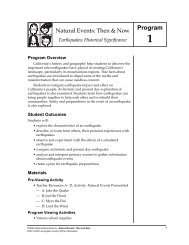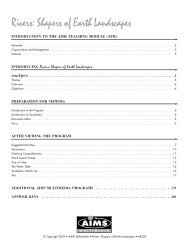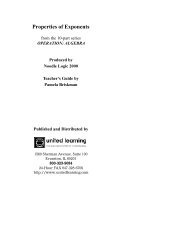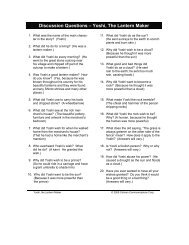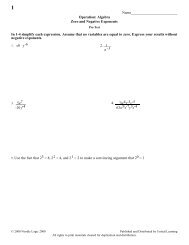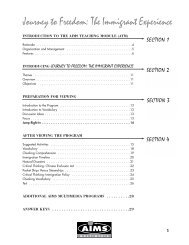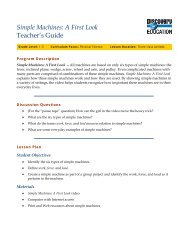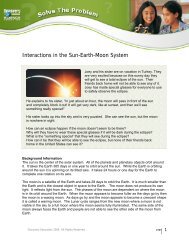Heat and Changing States of Matter - Discovery Education
Heat and Changing States of Matter - Discovery Education
Heat and Changing States of Matter - Discovery Education
You also want an ePaper? Increase the reach of your titles
YUMPU automatically turns print PDFs into web optimized ePapers that Google loves.
INTRODUCTION TOTHE PROGRAMThe presence <strong>of</strong> heat on the Earth isthe basis <strong>of</strong> all life. <strong>Heat</strong> is one <strong>of</strong> themost important elements known tohumans. It is used to warm ourhomes, provide us with light, cookour food, <strong>and</strong> produce fuel used fortransportation <strong>and</strong> electricity. We cansee basic examples <strong>of</strong> heat all aroundus. A breeze is created by warm airthat is replaced by cool air. A warmstove heats a room as currents circulatethe warm air. Infrared rays fromthe sun cause our skin to burn. Thesephysical examples <strong>of</strong> heat are bestunderstood if we examine the aspects<strong>of</strong> heat on a molecular level. In fact, itis the increased movement <strong>of</strong> invisiblemolecules that create heat in all substances.INTRODUCTION TOVOCABULARYBefore starting the program, write theword “thermal” on the board. Whatdoes this word mean to students?Where have they heard this word, orrelated words, before?(Thermal means “relating to orcaused by heat.” Some related wordsinclude: thermal underwear, thermos,thermometer, thermodynamics, thermonuclear<strong>and</strong> thermostat.)DISCUSSION IDEASThe heat that we use on Earth comesfrom six main sources. Can studentsname all six sources? What are someways that we use heat from thesesources? (The six main sources <strong>of</strong>heat are the sun, fire, friction, nuclearenergy, chemical reactions, <strong>and</strong> heatwithin the Earth. <strong>Heat</strong> from the sunwarms solar panels that make electricalenergy. <strong>Heat</strong> from fire is used tocook food <strong>and</strong> produce fuel. <strong>Heat</strong>from the friction <strong>of</strong> two sticks rubbingtogether can help us build a campfire.Lighting a match is an example<strong>of</strong> a useful chemical reaction that producesheat. Nuclear energy is used toproduce electricity for heating ourhomes.)FOCUSAsk students to think about the variousapplications <strong>of</strong> heat. What aresome ways that students used heatbefore getting to class today? Whatwould their day have been like withoutheat? Ask them to keep thesethings in mind as they begin the unit.© Copyright 1999 AIMS Multimedia <strong>Heat</strong> <strong>and</strong> <strong>Changing</strong> <strong>States</strong> <strong>of</strong> <strong>Matter</strong>13



